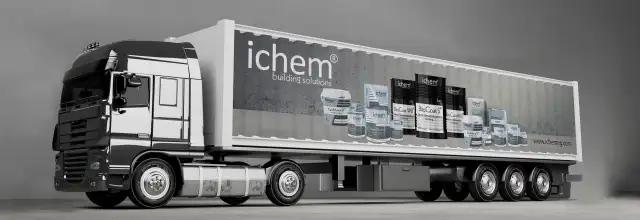
Common Mistakes in Executing Settlement Joints and How to Avoid Them | iChem Egypt
Introduction
Settlement joints are essential elements for ensuring the stability of concrete structures, whether in slabs or foundations.
Incorrect execution of these joints can lead to cracks in slabs, uneven settlement, and adverse effects on building stability.
iChem Egypt provides comprehensive solutions for the design and implementation of construction joints, adhering to engineering standards to ensure safe and long-lasting performance.
What Are Settlement Joints?
A settlement joint is a structural joint that allows differential settlement between parts of a building.
It is usually installed from foundations to the roof to prevent load transfer between building sections.
Its main function is to distribute loads and prevent cracks caused by localized settlement.
Difference Between Expansion Joints and Settlement Joints
Element | Expansion Joints | Settlement Joints |
|---|---|---|
Purpose | Absorb thermal movement | Control differential settlement |
Direction | Horizontal | Vertical |
Installation Location | Long slabs and large surfaces | Between building blocks and foundations |
Type of Movement | Expansion and contraction | Vertical settlement |
Choosing the right type depends on the building structure and expected loads.
iChem’s Role in Settlement and Construction Joints
iChem Egypt offers complete solutions, including:
Construction joints: for all types of slabs and foundations.
Tile and ceramic accessories: ensuring floor stability and load-bearing capacity.
Tile and stone adhesives: for strong adhesion and long-term durability.
Waterproofing materials: protecting structures from water infiltration.
Concrete additives: improving structural performance and controlling shrinkage.
Key iChem Settlement Joints
iChem provides a wide range of high-performance settlement joints. Some of the most prominent include:
I330 – the most requested in the Egyptian market.
I335 – rubber joint resistant to differential settlement.
I340 – water- and moisture-resistant joint.
I320 – suitable for floor slabs.
I326 – for heavy foundations.
I345 – controls shrinkage and thermal movement.
I315 – for large industrial floors.
I424 – concrete joint resistant to high pressure.
I370 – for areas exposed to vibration or irregular movement.
I821 – metal joint for high-load floors.
These joints cover most requirements for residential, commercial, industrial buildings, and bridges.
Common Mistakes in Executing Settlement Joints
Incorrect joint location
Problem: Cracks around the joint due to placement in non-critical areas.
Solution: Install joints at critical load points or slab boundaries.
Ignoring reinforcement details
Problem: Weak joint due to incorrect reinforcement.
Solution: Follow reinforcement specifications according to engineering codes.
Using inappropriate materials
Problem: Loss of flexibility and reduced waterproofing.
Solution: Choose materials compatible with concrete and resistant to moisture and heat.
Not following correct dimensions
Problem: Joints that are too small or too large lose effectiveness.
Solution: Follow standard dimensions for each type of joint.
Lack of inspection and follow-up after execution
Problem: Ignoring post-cast monitoring leads to worsening cracks.
Solution: Conduct regular inspections and monitor cracks around the joint.
How to Professionally Execute Settlement Joints
Identify critical points before casting.
Choose the appropriate iChem joint type.
Follow engineering codes for joint reinforcement.
Use supporting materials (PVC, rubber, aluminum) depending on the environment.
Monitor execution after casting to ensure optimal performance and minimize settlement issues.
Frequently Asked Questions (FAQ)
What are settlement joints and why are they important?
They control localized settlement and shrinkage in slabs and foundations and prevent cracking.What is the difference between expansion joints and settlement joints?
Expansion joints absorb thermal movement, while settlement joints control differential settlement.What are common mistakes when executing settlement joints?
Incorrect joint location
Ignoring reinforcement
Using unsuitable materials
Wrong dimensions
Lack of inspection
What types of settlement joints does iChem offer?
Examples: I330, I335, I340, I320, I326, I345, I315, I424, I370, I821Can I download the settlement joint PDF guide?
Yes, iChem provides a comprehensive guide with dimensions, reinforcement details, and layouts for each joint type.
Download Settlement Joints Catalog (PDF)
You can download the iChem catalog covering settlement and expansion joints, including layouts, reinforcement details, and dimensions:
🔗 Download PDF Catalog
Free Consultation with iChem Egypt
Looking for professional settlement joint solutions?
Contact iChem Egypt today for a free consultation and guidance on the best joints for your project.
📩 Call now or send your project plan for direct technical support.
Contact Information
Address: El Nozha City Center, Sector C, Tower 2, 7th Floor, Gesr El Suez Street
Phone: 02 22909120 – 010 22000050 – 010 80029701 – 010 10042900 – 010 10027900
Email: info@ichemeg.com

